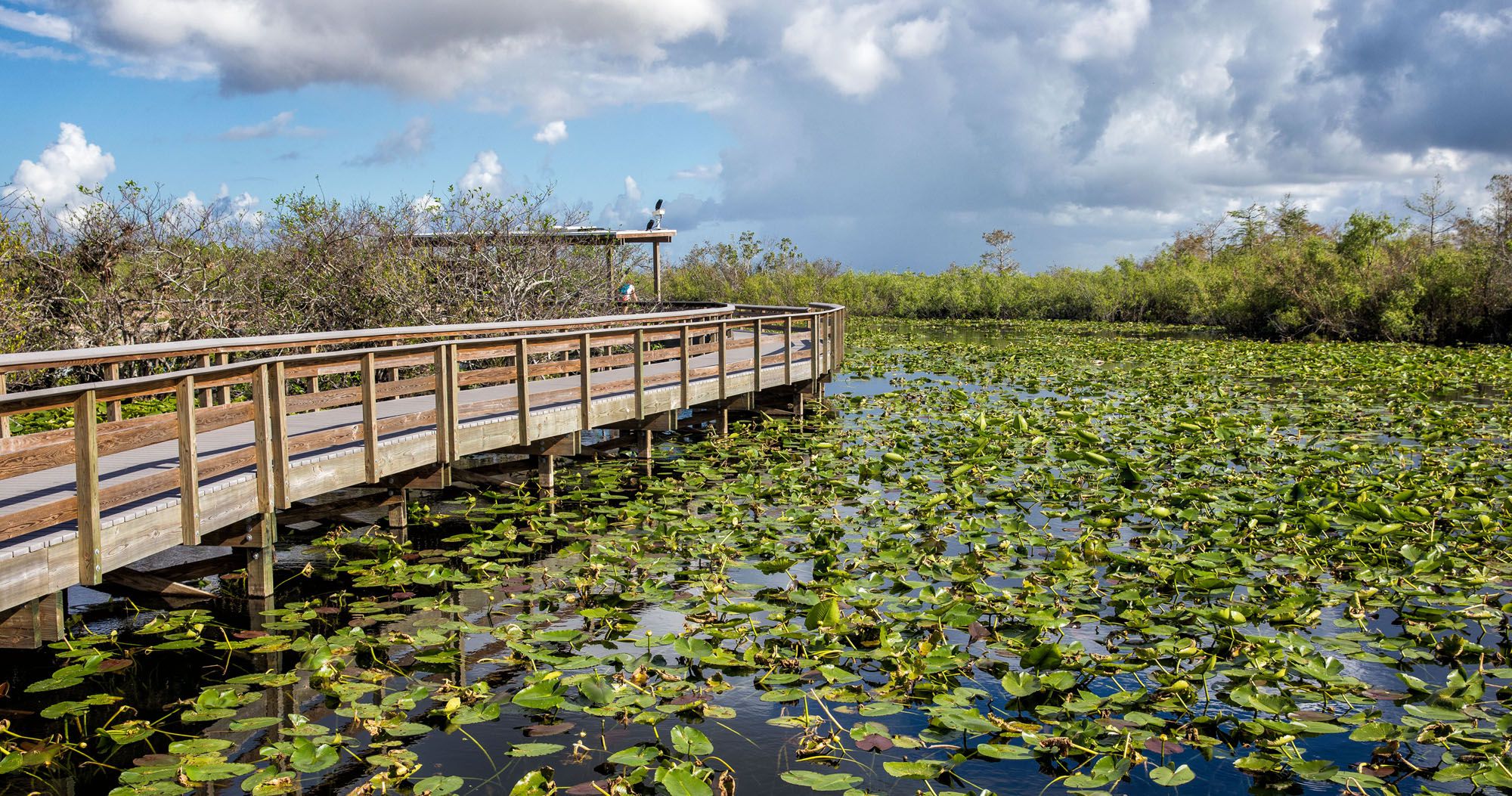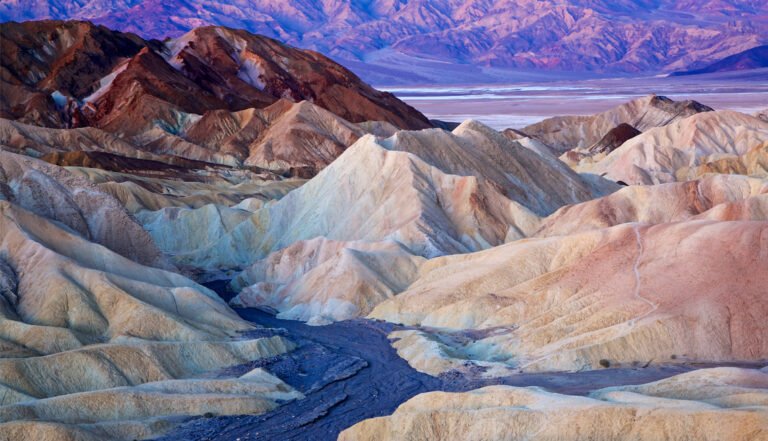Everglades National Park
Nestled across a vast expanse of 1.4 million acres, Everglades National Park stands as a pristine haven for nature lovers and adventure seekers. Established in 1947, this remarkable ecosystem captivates the hearts of approximately 942,000 annual visitors who come to witness its unique blend of diverse landscapes and breathtaking biodiversity. In this article, we’ll delve into the various facets of Everglades National Park, from its firearm regulations to its fishing opportunities, hunting endeavors, and so much more.
Size, History, and Visitors
Size: 1.4 Million Acres Year Established: 1947 Annual Visitors: 942,000
Before we explore the park’s recreational activities, it’s important to understand the logistical basics. Everglades National Park spans an astonishing 1.4 million acres, showcasing a multitude of ecosystems, including wetlands, mangroves, and hardwood hammocks. The park’s historical significance dates back to its establishment in 1947 when it became a testament to the nation’s commitment to preserving natural wonders. Each year, around 942,000 visitors are drawn to the park’s unique allure.
Firearms Regulations in Everglades National Park
Federal Legislation and Firearm Possession
As of February 22, 2010, federal legislation grants individuals who are legally authorized to possess firearms under federal, state, and municipal regulations the right to carry firearms within Everglades National Park. However, it is imperative to familiarize yourself with all relevant firearms regulations at the federal, state, and local levels before entering the park. It’s recommended to consult the comprehensive Florida Gun Laws for further information.
Fishing Adventures in Everglades National Park
Diverse Fishing Opportunities
Everglades National Park offers an abundance of fishing opportunities, encompassing both saltwater and freshwater areas. Roughly one-third of the park is characterized by saltwater environments, while the remaining two-thirds feature freshwater habitats. Whether you’re an angler seeking the thrill of saltwater fishing or a freshwater enthusiast yearning to explore its hidden gems, the park caters to all fishing preferences.
Licensing Requirements
For those keen on fishing, there are specific licensing requirements to be aware of. A freshwater fishing license is essential for fishing and retaining freshwater fish within the park’s freshwater areas. Similarly, a saltwater fishing license is mandatory for indulging in saltwater fishing or retaining fish from saltwater regions.
Catch Limits and Regulations
Licensed anglers are permitted to carry a maximum of 20 fish at any given time, with a cap of 10 fish per species. However, no restrictions apply to the number of non-native species anglers can retain. Certain areas within the park are off-limits for fishing, such as Eco, Mrazek, and Coot Bay Ponds, as well as the Flamingo Marina during daylight hours.
Crabbing and Shrimp Catching
While some regions are restricted, recreational fishermen can catch stone crabs and blue crabs during the state’s designated open season, adhering to specific gear regulations. When it comes to shrimp, they can be caught using a cast net or dip net for personal use, but not for commercial purposes.
Regulatory Resources
For comprehensive information on fishing regulations within Everglades National Park, anglers should acquire the latest copy of the Everglades Fishing Regulations, conveniently available at all visitor centers and entrance stations.
Preserving the Ecosystem: Hunting and Invasive Species Management
Hunting Prohibition and Python Management
While hunting is largely prohibited in Everglades National Park, an exception exists when it comes to hunting pythons. These invasive species have wreaked havoc on the park’s delicate ecosystem, driving some native species to extinction. Since the 1970s, pythons have become a pervasive problem, exhibiting aggressive behavior, rapid reproduction rates, and a voracious appetite. Estimates suggest a population ranging from 100,000 to over a million.
Python Eradication Program
In 2017, a hunting program was initiated to tackle the python predicament. Paid contractors and individuals have collectively eliminated approximately 9,000 pythons. It’s important to note that participating in the python hunting program requires adherence to specific guidelines and information, which can be accessed through the designated python program.
The Wonders Within Biodiversity and Conservation Efforts
Everglades National Park isn’t just a paradise for outdoor enthusiasts; it’s a sanctuary for a diverse array of flora and fauna. Known as the “River of Grass” by the Seminole Indians, this region boasts an array of environments, from sawgrass expanses to dense pine forests and mangrove thickets. The park is home to captivating creatures like the West Indian manatee and the awe-inspiring Florida alligator. Its waters host around 300 fish species, including the prehistoric Gulf toadfish.
A Precious Oasis Under Threat
Despite its natural splendor, the Everglades have long faced threats from urban development and pollution. To combat these challenges, government agencies are working collaboratively to restore the park’s delicate balance. Initiatives include eradicating invasive species such as the Burmese python and implementing measures to preserve the unique ecosystem.
Plan Your Visit
Ideal Visiting Period
The optimal time to explore Everglades National Park is between December and February, when the weather is pleasant, and the park’s natural beauty is at its peak.
Visitor Fees and Passes
Various options are available for visitors to access the park:
- $15.00 per person/cyclist for up to 7 days
- $30.00 per vehicle for up to 7 days
- $15.00 per motorcycle for up to 7 days
- $55.00 for Everglades National Park Annual Pass
Moreover, consider the America The Beautiful Annual Park Pass, which grants access to all U.S. National Parks for $80, including discounts for seniors, military personnel, and more.
Discover Everglades National Park: Visitor Centers
Flamingo Visitor Center
- Address: 1 Flamingo Lodge Hwy, Homestead, Florida 33034
- Phone Number: (239) 695-2945
- Operating Hours: Daily 8:00 AM–5:00 PM
Ernest Coe Visitor Center
- Address: 40001 State Road 9336, Homestead, FL 33034
- Phone Number: 305-242-7700
- Operating Hours: Daily 9:00 AM–5:00 PM
Shark Valley Visitor Center
- Address: 36000 SW 8th Street, Miami, Florida 33194
- Phone Number: (305) 221-8776
- Operating Hours: Daily 9:00 AM–5:00 PM
Gulf Coast Visitor Center
- Address: 815 Oyster Bar Lane, Everglades City, Florida 34139
- Phone Number: (239) 695-3311
- Operating Hours: Daily 8:00 AM–5:00 PM
Embark on an unforgettable journey through Everglades National Park, where nature’s wonders await at every turn. Immerse yourself in the stunning landscapes, encounter fascinating wildlife, and contribute to the preservation of this remarkable ecosystem.
Conclusion
Everglades National Park stands as a testament to the beauty and diversity of our natural world. From its firearm regulations to its fishing and hunting opportunities, the park offers a myriad of experiences for visitors to enjoy. By promoting responsible exploration and conservation efforts, we can ensure that this unique treasure continues to thrive for generations to come.
FAQs;
1. Can I bring firearms into Everglades National Park?
Yes, as of February 22, 2010, federal legislation allows those legally permitted to possess firearms to carry them within the park, under federal, state, and local regulations.
2. Are there fishing restrictions in the park?
While fishing is widely permitted, there are specific areas within Everglades National Park where fishing is prohibited. Make sure to familiarize yourself with these zones before casting your line.
3. Can I hunt in Everglades National Park?
Hunting is generally prohibited in the park, except for the case of hunting pythons as part of the invasive species management program.
4. What are the best times to visit the park?
The optimal time to visit Everglades National Park is during the months of December to February when the weather is pleasant and wildlife is active.
5. How much are visitor fees and passes?
Visitor fees range from $15.00 to $55.00 for various durations, while the America The Beautiful Annual Park Pass provides access to multiple national parks for $80, with discounts available for certain groups.







